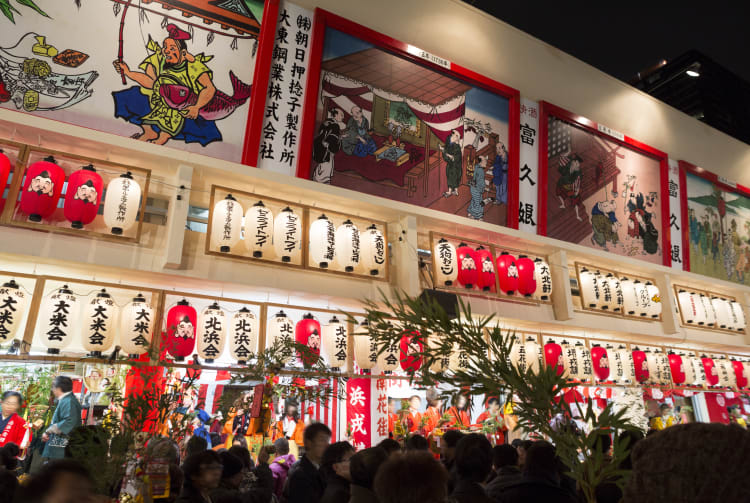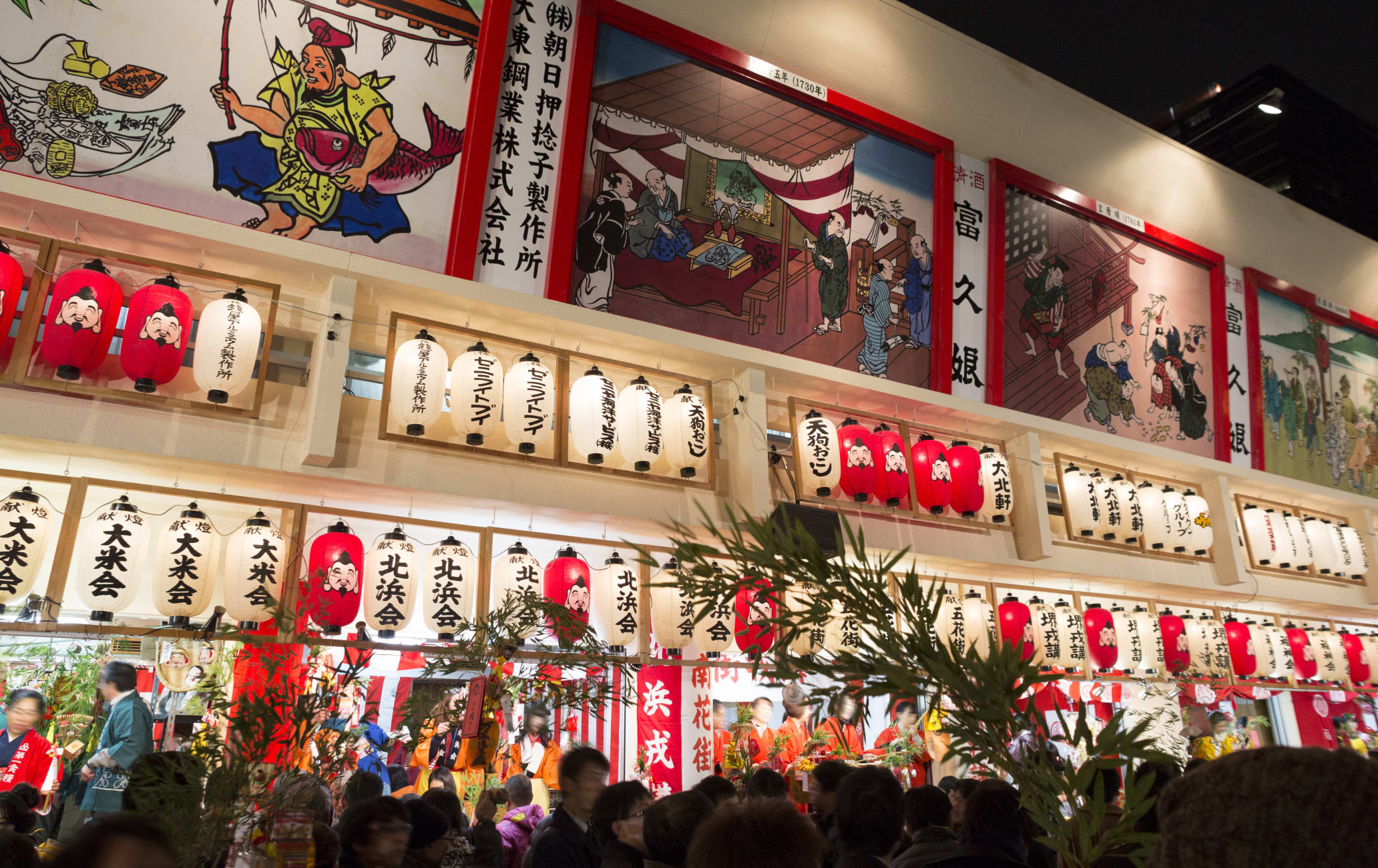Osaka's Toka Ebisu Festival offers the most fun you'll ever have at a religious ceremony
Just one week after the city's New Year's festivities concludes Osaka's local spirits rise once again to participate in the festive Toka Ebisu Festival.
Join the masses congregating at Imamiya Ebisu Shrine for what is colloquially known as Ebessan, where you'll wave a ceremonial bamboo branch and pray to the god of commerce for financial success in the new year.
Don't Miss
- Festivities including a parade of 500 people
- Osaka street food like takoyaki and yakisoba
- Fukumusume giving out good-luck charms
How to Get There
Imamiya Ebisu-jinja Shrine is accessible from central Osaka and Osaka Station via Namba Station.
From Namba Station, take the local Nankai-Koya Line, located within Nankai Namba Station, one stop, and exit at Imamiyaebisu Station. The shrine is a two-minute walk east.

Show me the money
Osaka is a merchant town and this Shinto custom is all about money. The city's working masses congregate at Imamiya Ebisu-jinja Shrine, giving offerings and prayers to Ebisu, the god of commerce, all with the hope of being rewarded with monetary wealth and fortune in the new year.
The traditional tastes of Osaka
The streets surrounding the shrine are packed with yatai stands, offering the likes of takoyaki, yakisoba, grilled pork skewers and more. Enjoy the hearty and delicious street food before heading further into the shrine.
Browse the huge selection of good-luck charms
As you approach the shrine, you'll encounter large stalls stocked with charms and offerings for Ebisu. While some can be very pricey, there are also fukusasa good luck bamboo branches that are generally free of charge. You'll notice just about every person in attendance is carrying them around.


Who are the women giving out charms?
The fukumusume, or "lucky daughters," are 50 women selected as representatives for the festival. Over 3,000 people apply each year, making the acceptance rate more difficult than most of Japan's elite colleges and institutions.
During the festivities, these women line the perimeter of the shrine, distributing charms and maintaining their composure despite the surrounding chaos. You'll be able to distinguish them by their traditional eboshi hats, which look like giant stockings turned upside down.
Planning your trip
Given the large crowds that congregate around the shrine every year, budget two to three hours minimum for your journey. It may take 20 to 30 minutes to enter the shrine, but the surrounding stalls of food, souvenirs and charms will provide enough entertainment to keep you interested while you slowly make your way forward.
Event details
The festival runs from the evening of January 9 (the Eve of Ebisu) to January 11.
Main festivities are on January 10. A large parade of more than 500 celebrities, geisha, and fukumusume take to the streets, handing out good luck charms to spectators.
The 11th is referred to as the “Last Helping of Luck,” offering visitors one final chance to pray to Ebisu.
The event takes place from 9:00 a.m. to 9:00 p.m., though it is not unusual to witness hordes of people straggling into the shrine well into the night.




























































